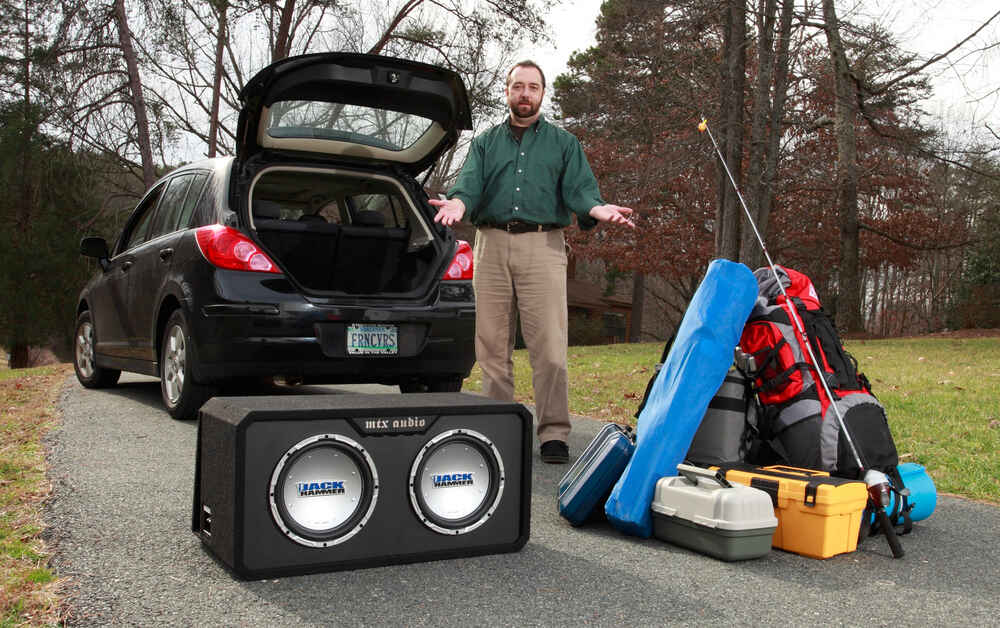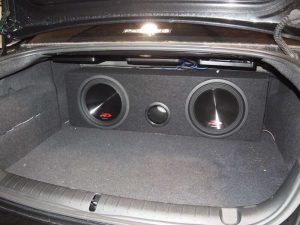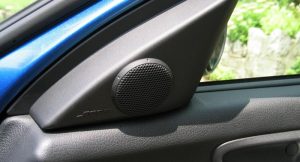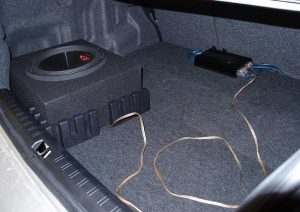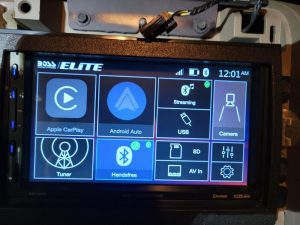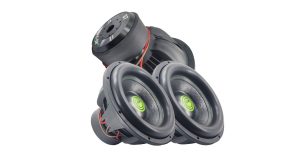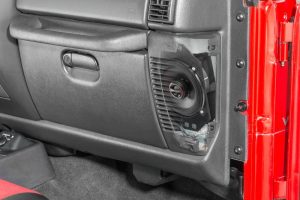Car audio enthusiasts often crave that deep, thumping bass to elevate their driving experience. A subwoofer delivers those low-frequency sounds, but a common question arises: Can you use a subwoofer without a box in a car? While it’s technically possible, skipping the enclosure comes with significant drawbacks. This guide dives into why subwoofer boxes matter, explores alternatives like free-air subwoofers, and offers practical tips to achieve booming bass without sacrificing sound quality. Let’s break it down.
Contents
- Why Subwoofer Boxes Are Essential for Car Audio
- The Downsides of Using a Subwoofer Without a Box
- Exploring Free-Air Subwoofers: A Box-Free Alternative
- Shallow-Mount Subwoofers: Another Space-Saving Option
- How to Set Up a Subwoofer Without a Box Safely
- Comparing Boxed vs. Boxless Subwoofers: Which Is Right for You?
- Tips for Maximizing Bass Performance in Your Car
- Common Questions About Subwoofers Without Boxes
- Conclusion: To Box or Not to Box?
Why Subwoofer Boxes Are Essential for Car Audio
Subwoofers produce low-frequency bass by moving air with a large speaker driver. However, without an enclosure, the sound waves from the front and back of the subwoofer collide, canceling each other out. This phenomenon, known as acoustic cancellation, results in weak or negligible bass output. A box prevents this by separating the front and back waves, ensuring the bass you hear is powerful and clear.
Boxes also protect the subwoofer from physical damage. In a car’s trunk or cabin, loose items or vibrations from driving can harm an exposed subwoofer. Enclosures provide a sturdy shield, extending the lifespan of your audio equipment. Beyond protection, boxes enhance efficiency, allowing the subwoofer to produce louder, more accurate bass with less power.
Different types of enclosures—sealed, ported, and bandpass—offer unique benefits tailored to your listening preferences. Sealed boxes deliver tight, precise bass, ideal for jazz or classical music. Ported boxes, with their vented design, create louder, booming bass perfect for hip-hop or rock. Bandpass boxes combine both, maximizing volume for those who love intense low-end sound. Choosing the right enclosure depends on your music taste and vehicle space.
The Downsides of Using a Subwoofer Without a Box
Running a subwoofer without an enclosure compromises both performance and durability. First, the lack of a box leads to poor sound quality. The bass becomes muddy or faint because the front and back sound waves interfere with each other. You’ll miss the deep, resonant lows that make a subwoofer worth installing.
Second, an exposed subwoofer faces a higher risk of damage. Vibrations from driving, cargo in the trunk, or even accidental bumps can tear the cone or harm the voice coil. This vulnerability shortens the subwoofer’s lifespan, leaving you with costly repairs or replacements.
Third, without a box, the subwoofer operates less efficiently. It requires more power to produce the same level of bass, putting strain on your car’s amplifier and electrical system. This inefficiency can lead to distortion, overheating, or even system failure over time.
Exploring Free-Air Subwoofers: A Box-Free Alternative
If trunk space is tight or you prefer a minimalist setup, free-air subwoofers offer a compelling solution. These subwoofers, also known as infinite baffle subwoofers, are designed to work without a traditional enclosure. Instead, they use the car’s trunk or a rigid surface, like the rear deck, as their “box.” The trunk acts as a large enclosure, separating the front and back sound waves to prevent cancellation.
Free-air subwoofers require careful installation to perform well. You must seal the trunk from the cabin to create an airtight barrier, ensuring the bass doesn’t leak into the passenger area. This setup works best in sedans with a solid rear deck, as hatchbacks or SUVs with fold-down seats may struggle to maintain a proper seal.
These subwoofers produce accurate, clean bass, though they may not deliver the same booming intensity as a ported box. They’re ideal for listeners who prioritize clarity over sheer volume, such as fans of acoustic or classical genres. Brands like JL Audio and Rockford Fosgate offer high-quality free-air models designed for car audio applications.
Shallow-Mount Subwoofers: Another Space-Saving Option
For those seeking bass without a bulky box, shallow-mount subwoofers provide another alternative. These compact subwoofers fit in small enclosures or even under seats, making them perfect for smaller vehicles or space-conscious drivers. Despite their slim design, they deliver impressive bass when paired with the right amplifier and enclosure.
Shallow-mount subwoofers often come with their own enclosures or require minimal box space, simplifying installation. They’re less prone to acoustic cancellation than a boxless subwoofer and offer better protection against damage. Look for models from brands like Kicker or Pioneer for reliable performance in tight spaces.
How to Set Up a Subwoofer Without a Box Safely
If you’re determined to use a subwoofer without a traditional box, follow these steps to minimize risks and optimize sound quality:
- Choose a Free-Air or Shallow-Mount Subwoofer: Select a subwoofer specifically designed to operate without a standard enclosure. Check the manufacturer’s specifications to confirm it’s suitable for free-air or minimal-box use.
- Find a Sturdy Mounting Location: Mount the subwoofer on a rigid surface, such as the rear deck or a custom baffle board. Ensure the surface can handle the subwoofer’s vibrations without rattling or flexing.
- Seal the Trunk or Cabin: For free-air setups, create an airtight seal between the trunk and the passenger area. Use materials like MDF (medium-density fiberboard) and silicone caulk to close gaps and prevent air leaks.
- Secure the Subwoofer: Fasten the subwoofer tightly to prevent movement during driving. Loose subwoofers can vibrate excessively, causing damage or unwanted noise.
- Pair with a Compatible Amplifier: Use an amplifier that matches the subwoofer’s power and impedance requirements. Adjust the gain settings carefully to avoid overpowering the subwoofer, which can lead to distortion or damage.
- Test and Tune the System: Play a variety of music tracks to evaluate the bass quality. Adjust the crossover and phase settings on your amplifier to achieve a balanced sound that complements your car’s speakers.
Comparing Boxed vs. Boxless Subwoofers: Which Is Right for You?
To help you decide, let’s compare the pros and cons of using a subwoofer with and without a box:
Boxed Subwoofers
- Pros: Superior sound quality, enhanced bass output, better protection, higher efficiency, customizable enclosure types.
- Cons: Takes up more space, requires more complex installation, can be costly depending on the enclosure.
Boxless Subwoofers (Free-Air or Shallow-Mount)
- Pros: Saves space, simpler installation for some setups, ideal for smaller vehicles, less intrusive design.
- Cons: Weaker bass output, requires precise installation for optimal performance, limited to specific subwoofer models.
If you prioritize deep, powerful bass and have ample trunk space, a boxed subwoofer remains the best choice. However, if space is a concern or you prefer a less invasive setup, free-air or shallow-mount subwoofers can still deliver satisfying bass with the right installation.
Tips for Maximizing Bass Performance in Your Car
Whether you choose a boxed or boxless subwoofer, these tips will help you get the most out of your car audio system:
- Match Components Carefully: Ensure your subwoofer, amplifier, and head unit are compatible in terms of power, impedance, and signal output. Mismatched components can lead to poor performance or damage.
- Use Quality Wiring: Invest in high-gauge power and ground cables to minimize voltage drops and ensure consistent power delivery. Poor wiring can cause noise or reduced bass output.
- Tune Your Amplifier: Set the low-pass filter to cut off frequencies above the subwoofer’s range, preventing unwanted vocals or midrange sounds. Adjust the gain to avoid clipping or distortion.
- Soundproof Your Vehicle: Add sound-deadening materials to your car’s trunk, doors, or floor to reduce rattles and enhance bass clarity. This creates a cleaner listening environment.
- Consider Your Music Preferences: Choose an enclosure or subwoofer type that suits your favorite genres. Sealed boxes work well for detailed bass, while ported boxes excel for loud, booming lows.
- Test Different Placements: Experiment with subwoofer placement to find the sweet spot for bass response. In some cars, facing the subwoofer toward the rear or upward improves sound quality.
Common Questions About Subwoofers Without Boxes
Can I use any subwoofer without a box?
No, most standard subwoofers require an enclosure to perform properly. Only free-air or shallow-mount subwoofers are designed to operate without a traditional box.
Will a boxless subwoofer damage my car’s audio system?
A properly installed free-air subwoofer won’t harm your system. However, using a standard subwoofer without a box can strain your amplifier and produce poor sound quality.
How much space do I need for a free-air subwoofer?
You’ll need enough trunk space to act as the enclosure, plus a rigid mounting surface like a rear deck. Ensure the trunk can be sealed from the cabin for best results.
Are shallow-mount subwoofers as powerful as traditional ones?
Shallow-mount subwoofers deliver less bass intensity than larger boxed subwoofers but still provide solid low-end performance for smaller spaces.
Conclusion: To Box or Not to Box?
Using a subwoofer without a box in a car is possible, but it’s not the best approach for most drivers. Traditional enclosures—sealed, ported, or bandpass—offer superior sound quality, protection, and efficiency. If space constraints or installation simplicity are priorities, free-air or shallow-mount subwoofers provide viable alternatives. These options deliver decent bass without the bulk of a standard box, provided you install them correctly.
Before deciding, consider your music preferences, vehicle space, and budget. A well-chosen subwoofer and setup can transform your car’s audio, delivering the deep, immersive bass you crave. Explore premium car audio solutions and installation tips at Auto Stereo Guide to build the ultimate sound system for your ride.
